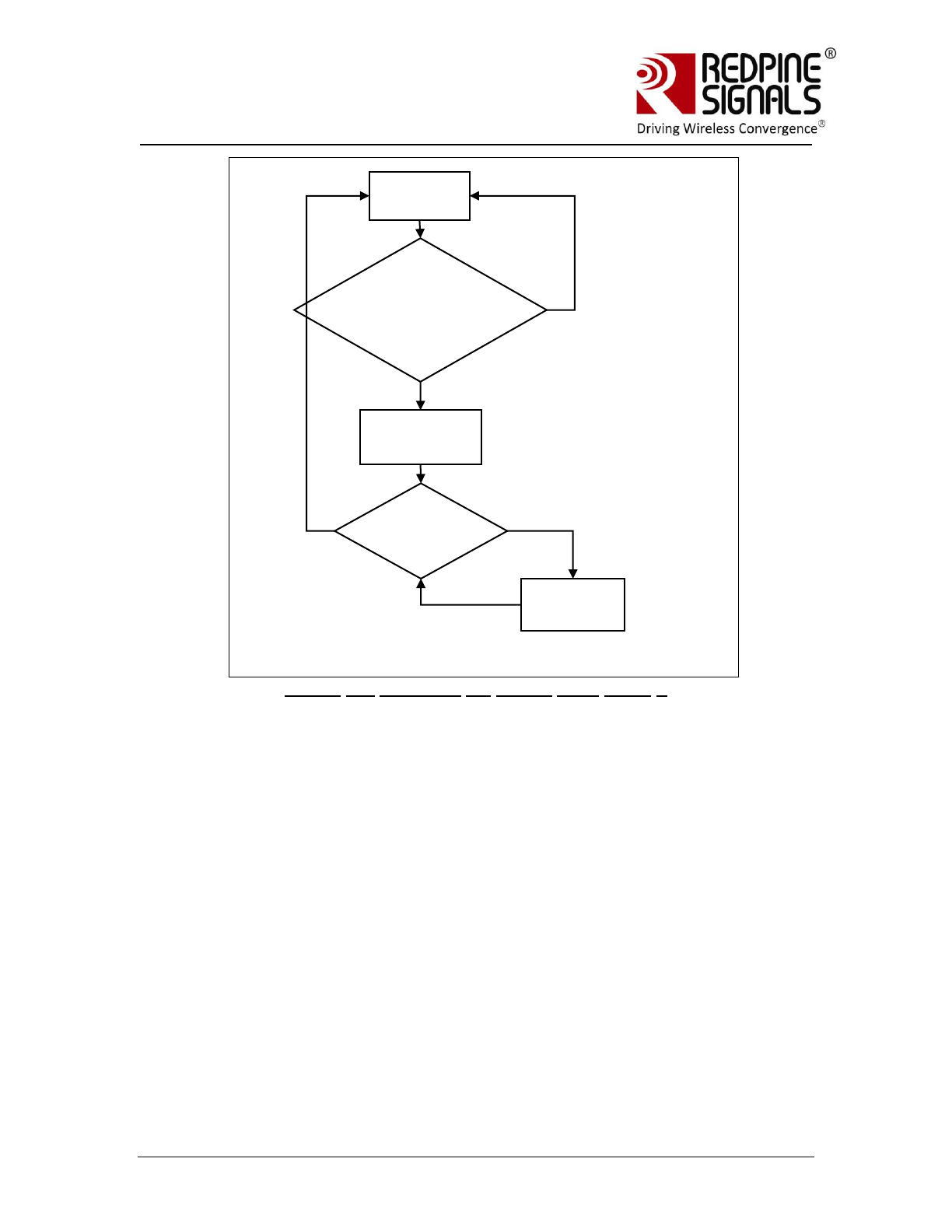User guide

Redpine Signals, Inc. Proprietary and Confidential. Page 117
R
R
S
S
9
9
1
1
1
1
0
0
-
-
N
N
-
-
1
1
1
1
-
-
2
2
2
2
/
/
2
2
4
4
/
/
2
2
8
8
S
S
o
o
f
f
t
t
w
w
a
a
r
r
e
e
P
P
r
r
o
o
g
g
r
r
a
a
m
m
m
m
i
i
n
n
g
g
R
R
e
e
f
f
e
e
r
r
e
e
n
n
c
c
e
e
M
M
a
a
n
n
u
u
a
a
l
l
V
V
e
e
r
r
s
s
i
i
o
o
n
n
4
4
.
.
1
1
5
5
Figure 25: Activities for Power Save Mode 2
4.7 TCP/IP Stack Usage in RS9110-N-11-22/24/28
RS9110-N-11-22, RS9110-N-11-24 and RS9110-N-11-28 are Wi-Fi
modules with integrated TCP/IP stack. This reduces the development
effort for designers who don‟t have the TCP/IP stack on their Host
platform. However, there are applications where the designer wants to
run his own TCP/IP stack on the Host. The TCP/IP stack inside the module
can be bypassed in such scenarios. This feature of bypassing the stack is
available from firmware version 4.5.0 and above. For users using a
version lower than 4.5.0, this feature is not available, but this PRM would
be valid except for this section.
4.7.1 Using the Wi-Fi module with TCP/IP stack enabled
The Wi-Fi module is by default in “TCP/IP stack enabled” mode.
1. The reference driver that the user should use for this mode is placed
inside RS.CN.xx.GENR.SP.x.x.x/Driver/Driver_TCP
2. The API manual that should be used is placed in
RS.CN.xx.GENR.SP.x.x.x/Driver/Driver_TCP/Documentation/
DTIM interval
reached or data
received from Host?
Yes
No
Module goes
to sleep
No
Complete
data
transactions
Module wakes up
and executes
data transaction
Data
transaction
complete?










